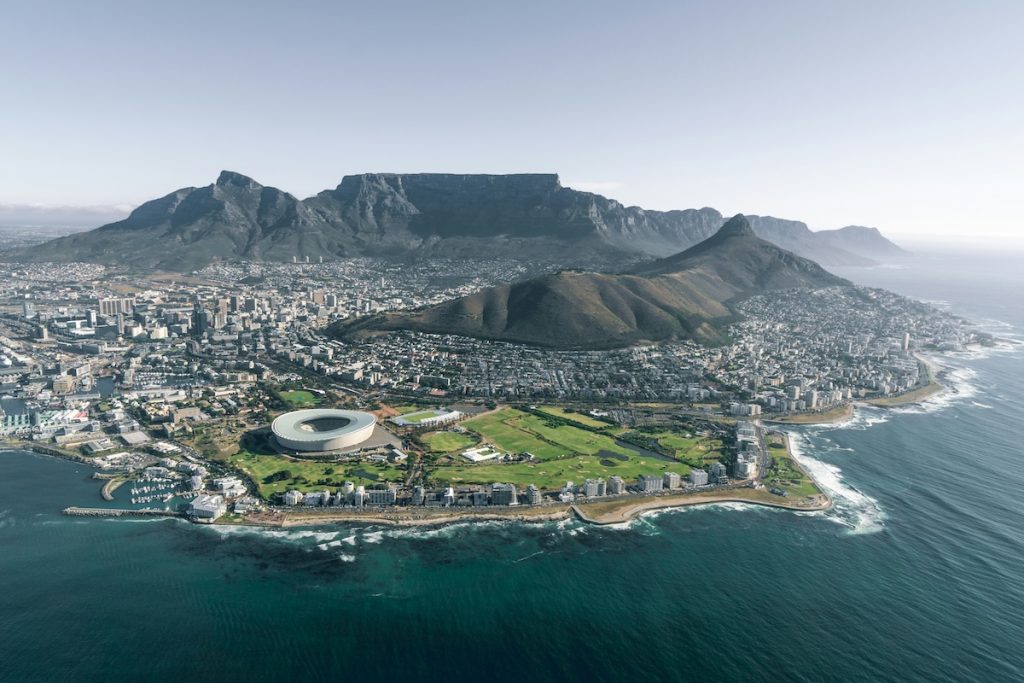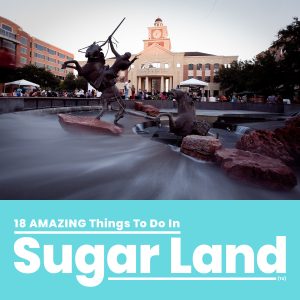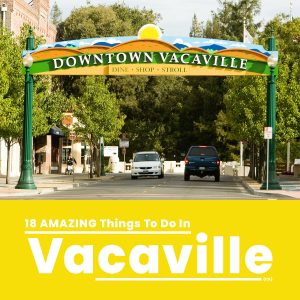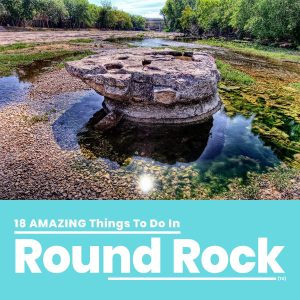What is South Africa famous for, other than beloved leaders such as Nelson Mandela and well-known tourist hotspots?
It is a country of unparalleled natural beauty, with towering waterfalls, golden savannahs, white sand beaches, ochre deserts, and rolling Winelands. It is also one of the most geologically and socially diverse countries globally.
South Africa is famous for its cultural diversity. The ‘Rainbow Nation’ is a melting pot of people from across the globe, blending traditional and modern lifestyles in a unique tapestry.
Steeped in history, celebrated for its sporting achievements, and boasting the largest economy in Africa, South Africa is a destination that should be on everyone’s bucket list. Here are 25 fascinating facts about South Africa.
Natural Wonders
Diverse Wildlife
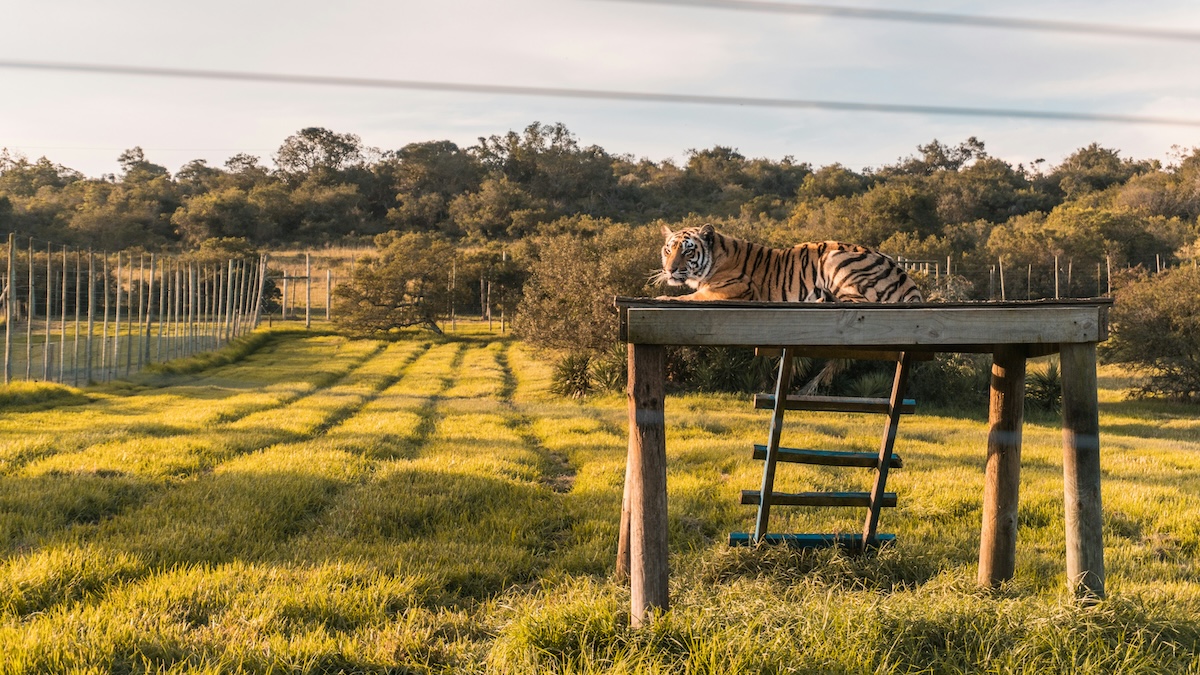
South Africa is lauded for its world-class safari destinations. The diversity of natural wildlife and landscape offers something for everyone. They even have penguins!
You can see all the ‘Big Five’ game animals (lions, elephants, rhinoceros, leopards, and buffaloes) in most parks. The most popular game parks in South Africa are the Kruger National Park, Sabi Sand Game Reserve, Pilanesberg National Park, Addo Elephant National Park, Hluhluwe-iMfolozi Park and Madikwe Game Reserve, and each delivers a unique experience.
Take a hot-air balloon safari across Pilansberg National Park or view Addo Elephant Park’s large elephant populations from behind a horse. Explore Hluhluwe-iMfolozi Park, famed for its density of rhinos. If you are looking for a glimpse of the ever-elusive African Wild Dog, then Madikwe Game Reserve is the place to be.
Remember that safari is not about ticking the ‘Big Five’ off your checklist. The beauty of safari is as much in the miniature and lesser seen; look out for South Africa’s ‘Little Five’ the Elephant Shrew, Ant Lion, Rhinoceros Beetle, Buffalo Weaver and Leopard Tortoise. Keep your eyes open for the hard-to-spot Pangolin, shy Aardvark and ferocious Honey Badger. You will surely witness the furred antics of the populous Meerkats and Bat-Eared Fox in most locations.
Safari is known for game drives, but alternative ways exist to get out in the bush. To fully immerse yourself in South Africa’s natural world, consider guided walks, birdwatching trips, hot-air balloon safaris, and stargazing evenings.
Stunning Landscapes
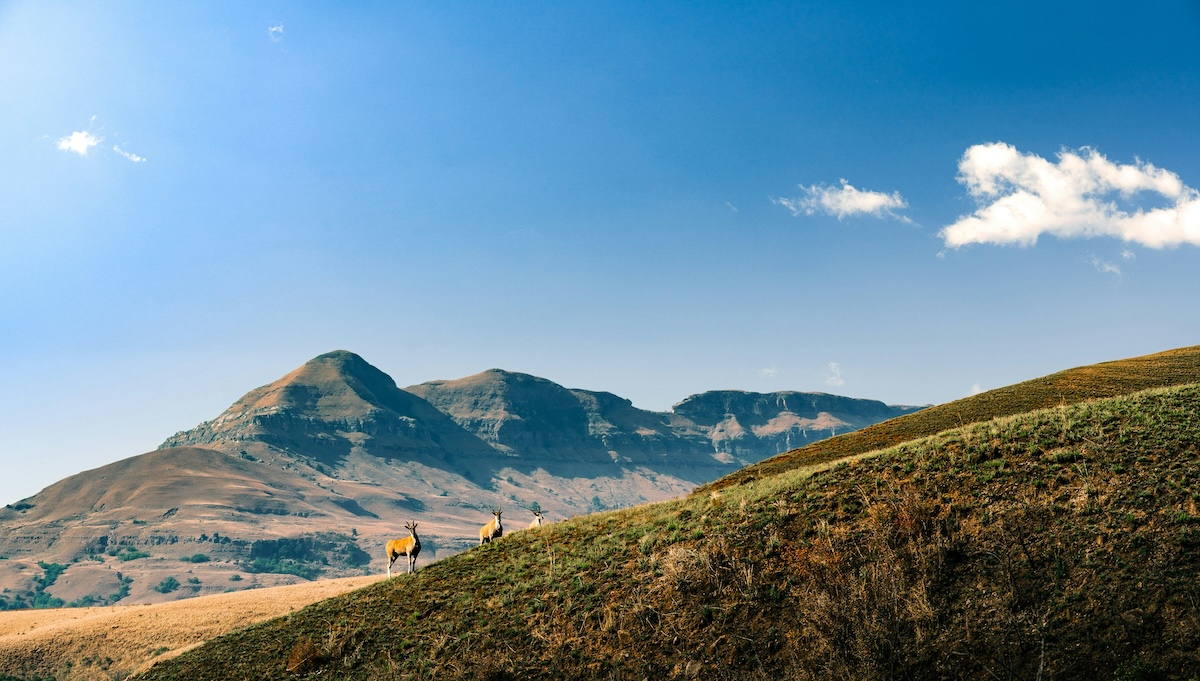
South Africa is blessed with a stunning natural landscape. From the red dunes of the Kalahari to the vast rolling plains of Kruger National Park and the impossibly perfect fynbos-lined beaches of Cape Town. In South Africa, you can drive for less than a day and experience desert, forest, winelands, and snow—all within a few hundred kilometres.
South Africa has a multitude of notable landmarks, many of which have been named UNESCO World Heritage sites. One of the most famous landmarks in South Africa is Table Mountain, Cape Town’s beloved flat-topped mountain that dominates the city skyline. The top is accessible by cable car, but the real adventure lies in summiting it via one of its many footpaths. Table Mountain is home to a vast range of plant and animal life, including the rare fynbos plant species whose distinctive flowers are found only on the southern tip of Africa.
The Drakensberg Mountains, another UNESCO World Heritage Site, are the tallest in South Africa. The landscape consists of dramatic cliffs, plunging waterfalls, and rare flora and fauna, and it’s one of the few places where snowfall occurs throughout the African continent.
Here, the Tugela Falls, a series of five connecting waterfalls, vies with Venezuela for the title of the tallest waterfall in the world at a towering 3,225ft. Within the area are 35,000 San Bushman rock paintings, the oldest of which is around 2,400 years old. Hiking is the most popular activity in the mountain range, and there are several campsites and lodges where you can rest.
You can’t mention South African landscapes without nodding to Kruger National Park. The largest game reserve in South Africa stretches for 20,000 square kilometres along the Mozambique border. The park is famed for its colossal wildlife numbers, but it is worth visiting for its landscape alone. The geography ranges from arid desert to mountainous forest, acacia-peppered savannah and fertile wetlands. Animal-filled rivers and waterholes are abundant, and there’s nowhere better to experience a proper African sunset.
Blyde River Canyon is the third largest canyon in the world, running 26 kilometres long and around 800m deep. The Blyde River, with its pools and waterfalls, runs through the canyon, forging a tropical landscape which is home to hippos, crocodiles, monkeys, and several species of eagle, vulture, and owl.
Cape Winelands
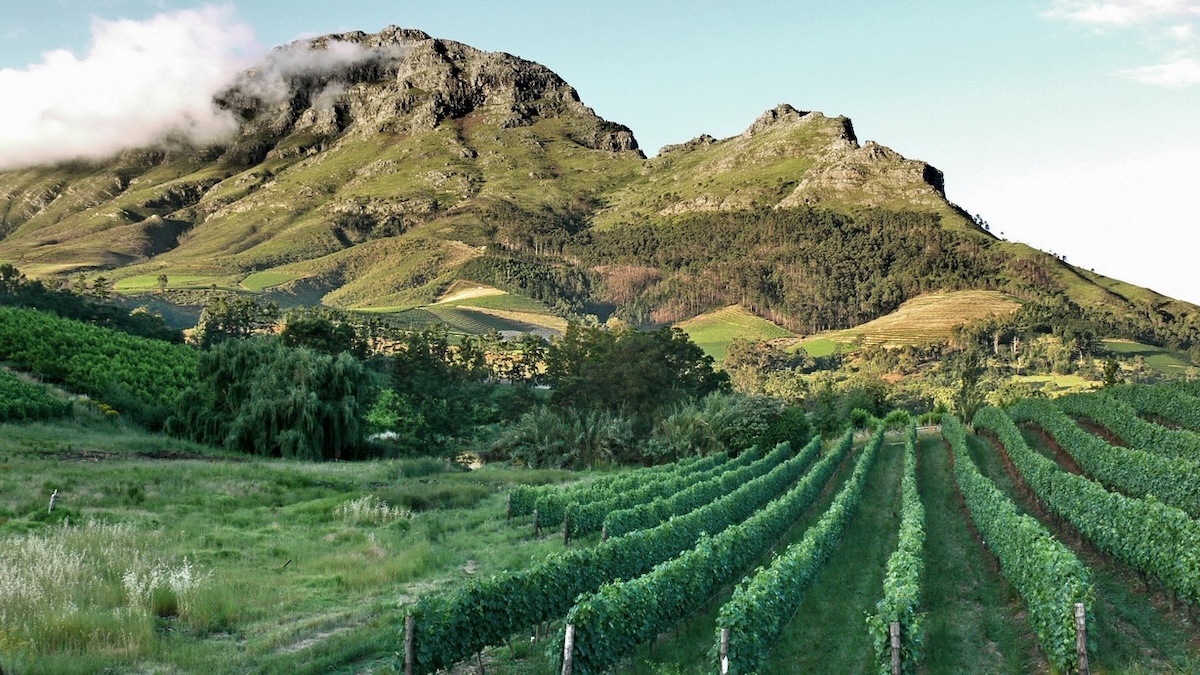
The Cape Winelands merge history, natural beauty, excellent food, and, of course, wine, which is better than any other place on Earth. Located a few hour’s drive from Cape Town, the Winelands are one of the country’s most beautiful and culturally rich regions.
The historic Wineland towns of Stellenbosch, Franschhoek and Paarl are backed by the picturesque Simonsberg, Hottentots-Holland, and Helderberg mountain ranges. Their sturdy peaks tower over emerald valleys, endless vineyards and sleepy rivers.
Winemaking in South Africa dates back to the 17th century when Dutch settlers established their wine estates. Some of the oldest estates include Meerlust, Vergelegen in Somerset West, Allée Bleue in the Franschhoek Valley and the divine Rust en Vrede. Most vineyards are open to the public, where you can spend a heady afternoon tasting the best wines in incredible surroundings.
The Cape Winelands is one of the first places where Dutch immigrants established themselves in South Africa; it is a place of enormous historical value. Visit the many museums and galleries throughout the region, the best of which are the Stellenbosch Museum and Huguenot Memorial Museum in Franschhoek.
A visit to the Cape Winelands allows you to glean Cape Dutch architecture. Look for the historic buildings clearly recognisable with their whitewashed walls, ornate gables, large windows, and thatched roofs.
Rich Biodiversity
South Africa is the third most biodiverse country in the world. Its habitats include forests, deserts, subtropical jungles, savannahs, mountains, and marine areas. The wide-ranging climate, topography, and geology are why South Africa is home to over 95,000 known species, many of which are found nowhere else on Earth.
South Africa is one of only 17 megadiverse countries in the world. The criteria for a megadiverse country is that there are at least 1500 endemic species; flora or fauna cannot be found anywhere else on Earth. Of South Africa’s amphibians, butterflies, reptiles, spiders, and freshwater fish, 50% live only in South Africa. It is estimated that 40% of South Africa’s marine animals are endemic, and two-thirds of the plant species.
South Africa has three biodiversity hotspots out of only 36 globally. These hotspots are the Cape Floristic Region, which is home to the famed Fynbos scrublands. The semi-desert area of the Succulent Karoo biome, where around 3000 of its plant species are endemic, and the subtropical Maputaland-Pondoland-Albany.
In South Africa, and nowhere else, you can see the Cape Mountain Zebra, Black Wildebeest, Bontebox and Blesbox, the Armadillo Girdled Lizard, Speckled Tortoise, and Riverine Rabbit.
Garden Route
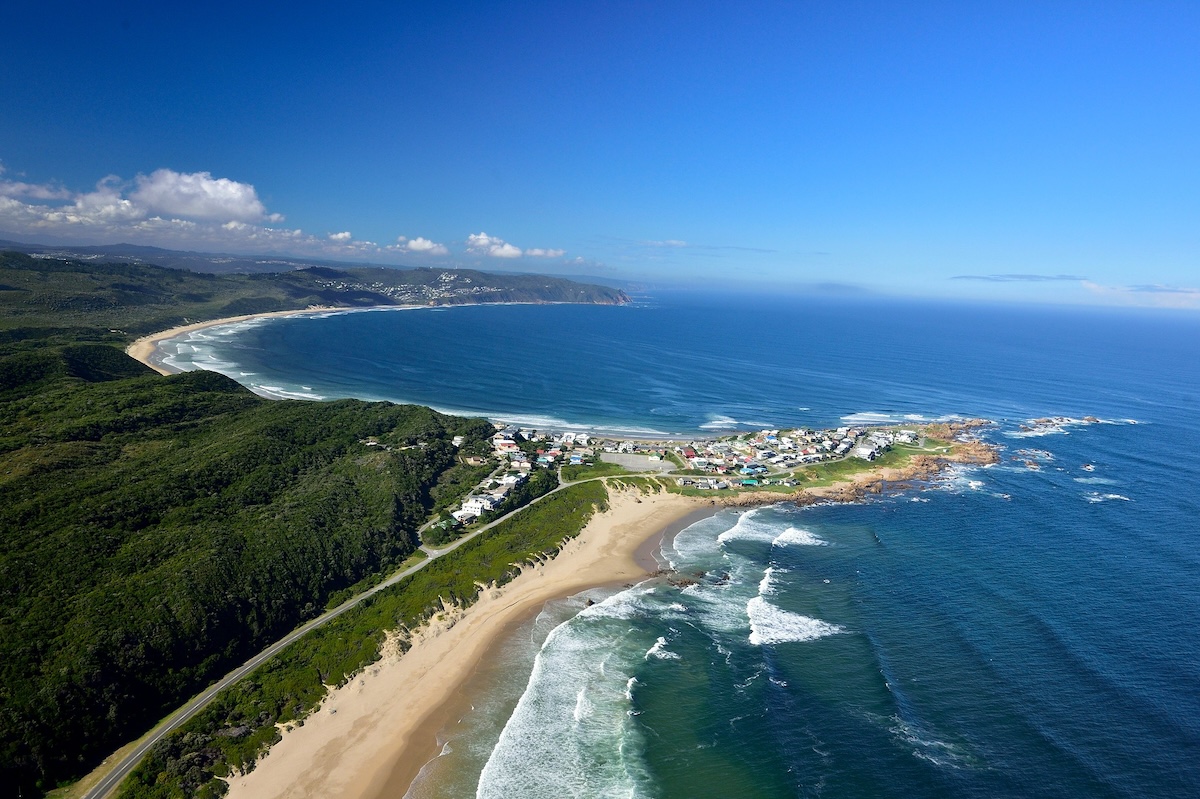
The Garden Route spans 124 miles through the Western and Eastern Cape Provinces. It is an idyll of leaping whales, indigenous forests, white beaches, and soaring cliffs, not to mention the culinary delights that await at the many historic towns along the way.
The official starting point is Mossel Bay. The Garden Route then passes through George, Knysna, Plettenberg Bay, and Wilderness and ends at Storms River. The route takes a mostly coastal route past impossibly beautiful beaches, lagoons, and secret coves. Out in the azure ocean, Southern Right Whales, Great White Sharks, pods of dolphins, and even penguins entertain you as you pass.
The route takes you through Wilderness National Park, a 26,000-acre reserve that snags 19 kilometres of coastline; the miles of sandy beach backed by pea-green mountains are a must-do. At the far end of the route is Tsitsikamma. Tsitsikamma is drenched in dramatic coastal scenery and lush Fynbos-rich forest, crisscrossed with rivers that lead down to isolated beaches.
The largest town on the Garden Route is Knysna, which perches on an estuary and is famed for its Oyster Festival. This bustling, vibrant place is packed with restaurants, bars and shops and offers a wide choice of places to stay. Plettenberg Bay is a quieter, beachier option with excellent restaurants and a more laid-back vibe.
Remember to detour to some of the many vineyards along the route. Top choices include Grundheim, Boplaas and Calitzdorp Cellar.
Karoo
The Karoo National Park is a semi-arid region in South Africa. It consists of the Great Karoo and the Little Karoo. Imagine vast desolate landscapes, remote cowboy towns, and paleontological riches.
- The Great Karoo encompasses much of central South Africa. It has endless horizons, barren landscapes and unusual geological formations.
- The Little Karoo is closer to the coastline, sandwiched between the Swartberg and Langeberg mountain ranges. The Little Karoo is arid, but you will also find fertile valleys and rugged mountain ranges.
The Karoo is renowned as a place of huge historical importance. The area is rich in San Bushman rock art, and it is one of the world’s richest fossil beds.
For more recent historical adventures, visit the major towns of Graaff-Reinet, Prince Albert, and Matjiesfontein. The towns’ colonial past is evident in their architecture, museums, and historical landmarks. The Karoo is an incredible location for biking, hiking and 4×4.
There are Two Countries in South Africa
There are two independent countries within the geographical region of South Africa:
- Lesotho
- Lesotho is a landlocked country entirely surrounded by South Africa. It is a high-altitude, mountainous kingdom known for its rugged terrain and beautiful landscapes.
- Eswatini (formerly Swaziland)
- Eswatini is a small landlocked monarchy in Southern Africa, bordered by South Africa to the west and Mozambique to the east. It is known for its rich cultural heritage and beautiful natural reserves.
These countries are distinct and separate from the Republic of South Africa.
Cultural Richness
Cultural Diversity
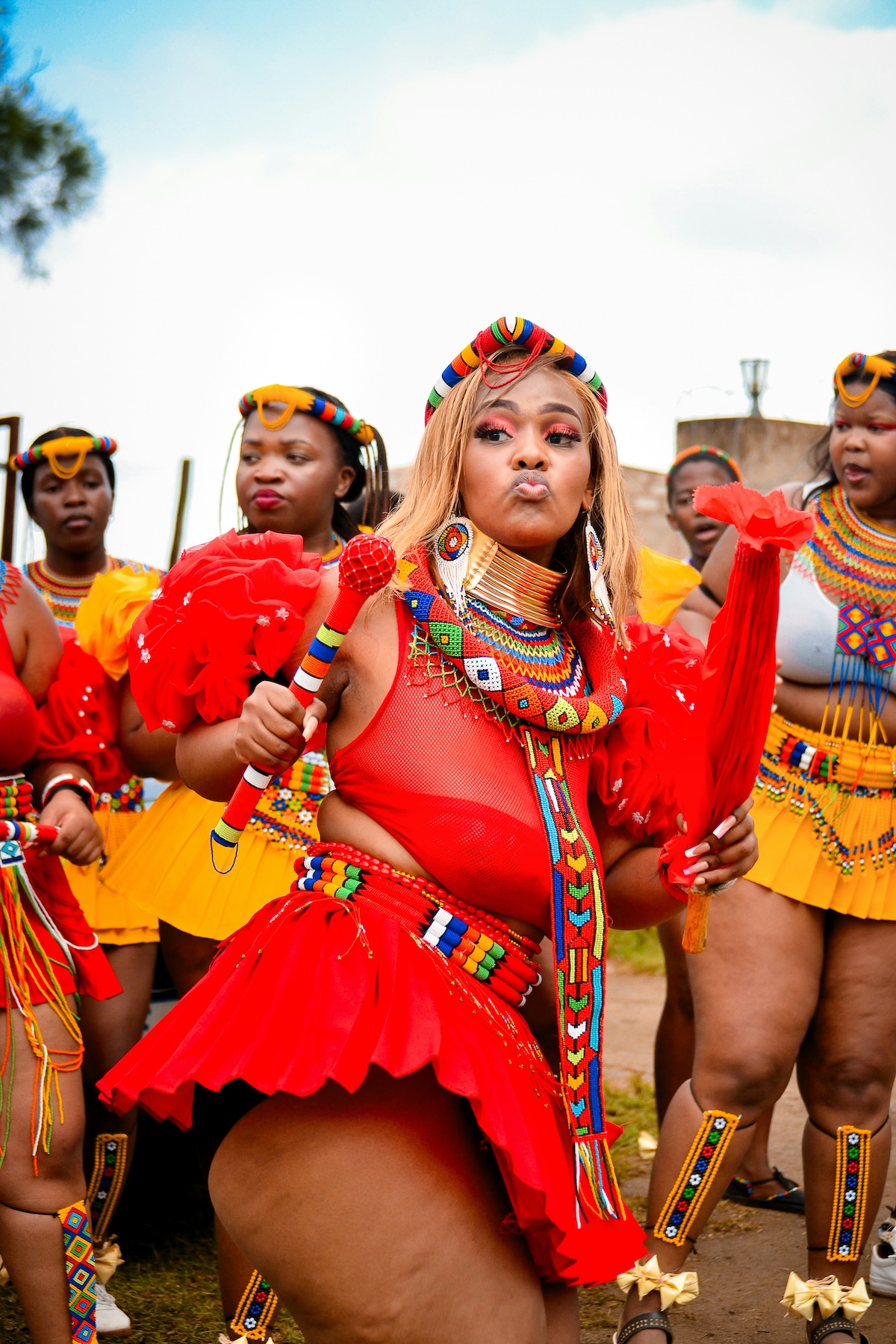
South Africa is rich, not only in its wide-ranging flora and fauna but in its cultural diversity. Nicknamed the ‘Rainbow Nation’, today’s South Africa is formed of a melting pot of cultures, languages, and religions.
Until the 14th century, South Africa was inhabited only by the Bantu people, who formed individual tribal kingdoms, which are still a part of South Africa today. The tribes Zulu, Xhosa, Bapedi (North Sotho), Batswana, South Ndebele, Basotho (South Sotho), Venda, Tsonga and Swazi existed peacefully until the arrival of the Dutch people into Cape Town in the 1700s. The Dutch claimed ownership of the Cape area, followed by the British 150 years later. British occupancy forced the Dutch settlers inland, and over the years, their influence spread countrywide.
Today, South Africa has 11 tribes, a number which now includes Afrikaners and English.
South Africa is a blend of cultures, languages, and religions from all over the world. Chinese, Indian and Malay populations have had a huge cultural impact on South Africa.
The term Rainbow Nation was coined during apartheid as a declaration that there was no longer a division between white and black but an inclusive array of colours, cultures and people, each as important as the other.
11 Official Languages
South Africa has eleven official languages; Sepedi (also known as Sesotho sa Leboa), Sesotho, Setswana, siSwati, Tshivenda, Xitsonga, Afrikaans, English, isiNdebele, isiXhosa and isiZulu. The most widely spoken language is isiZulu, followed by isiXhosa, Afrikaans and English.
Braaivleis (Braai)
Nothing speaks of South Africa’s cultural diversity like food. Traditional African food is a staple. A country-wide favourite is pap, which is a maize meal ground into porridge. The Dutch brought Bobotie and malva pudding, while the English arrived with their prized sausages. The Indian influence in South Africa is heavily felt in the use of spices and the popularity of curries, but nothing speaks of South Africa more than the Braai.
Braai is Afrikans for barbeque. The braai has become a cultural phenomenon in South Africa. A braai is more than food; it’s an event and a symbol of community and celebration.
The preparation of a braai is seriously considered, and there are many light-hearted arguments over wood vs. coal and camel thorn vs. sickle bush. It is typical that the host, nicknamed the Braaimaster, prepares the meat, which can be beef, chicken, lamb, pork, ostrich, or rarer meats such as springbok, kudu, or impala. Guests bring sides of braaibroodjies (grilled sandwiches), chakalaka, pap, and plentiful wine and beer.
Cultural Festivals
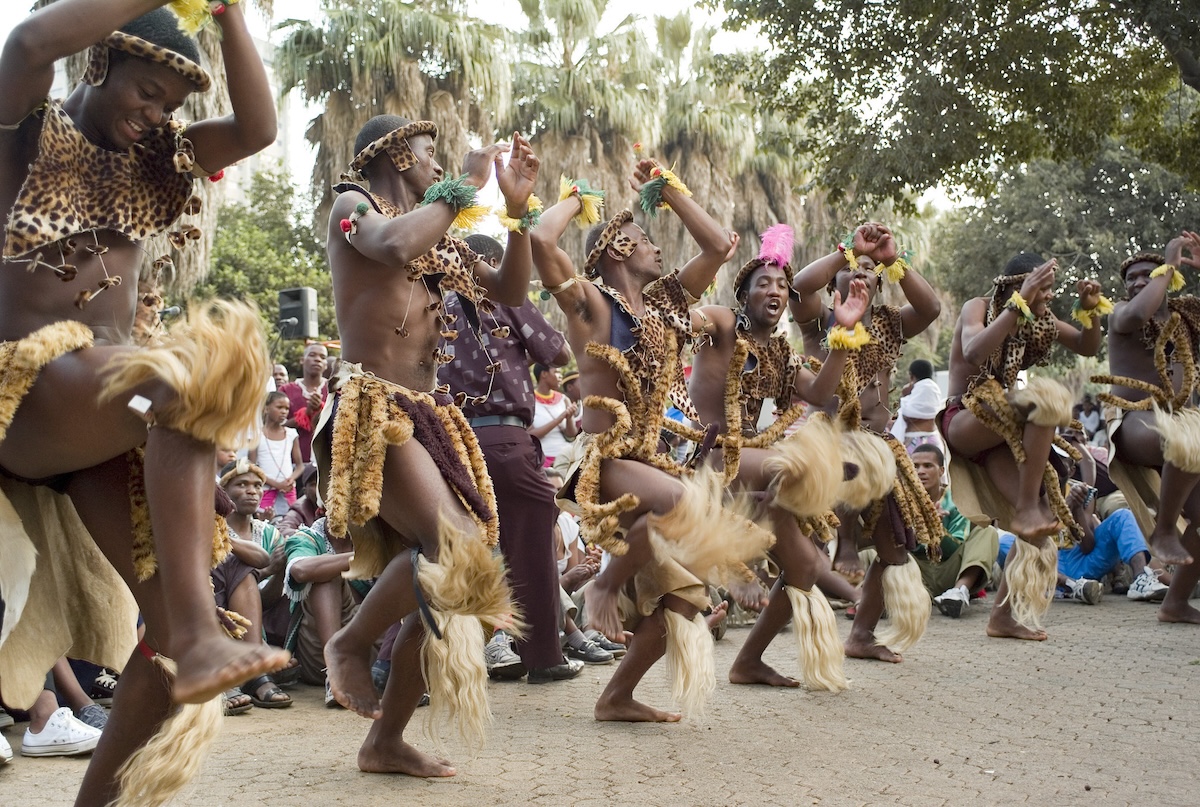
In a country that celebrates its differences, it’s not surprising that there are many festivals to suit all tastes. South Africa’s cultural festivals express influences and traditions from around the globe. Music, dance, art, wine, film, and even oysters are featured at joyous events nationwide.
Cape Town International Jazz Festival is one of the largest jazz festivals on the continent. A truly international event, it attracts people from all over the world. The festival hosts famous local and international artists and a large audience of jazz enthusiasts.
Klein Karoo National Arts Festival, also known as the KKNK, is an Afrikan festival in the town of Oudtshoorn, Karoo. The event celebrates Afrikan culture through performance art, theatre, music, visual art, and literature.
Durban International Film Festival is Africa’s premier film festival, held annually in Durban. Over ten days, it showcases local and international films, documentaries, and short films from around the globe, focusing on African cinema.
Cape Town Carnival is a gloriously technicolour street parade and carnival. Over 1000 performers from 48 community groups celebrate the city’s diversity through music and dance. Expect elaborate costumes and rainbow floats.
Knysna Oyster Festival promises attendees a ‘shucking good time’. The annual festival celebrates the local oyster by delivering cooking competitions, wine tastings, and a monumental arts and crafts market.
National Arts Festival in Grahamstown has become one of Africa’s largest arts festivals. They aim to champion a diversity of works across languages and genres. You can expect theatre, dance, music, and visual arts worldwide.
AfrikaBurn is an alternative festival based on Burning Man. Held in Tankwa Karoo National Park, the event is described as a ‘radical experiment in self-reliance’. AfrikaBurn is a volunteer event where participants create performance art, theme camps, music, and mutant vehicles. Not for the faint-hearted.
Soweto Wine Festival is a celebration of South Africa’s wines. It brings together South Africa’s best winemakers, crafters, artisans and chefs for a three-day cultural experience.
Vodacom Durban July is a horse racing event in Durban. The racing is only part of the attraction, with fashion being a clear second. Celebrities flock to the event for a day of racing, fashion and design competitions, food and drink.
Apartheid History
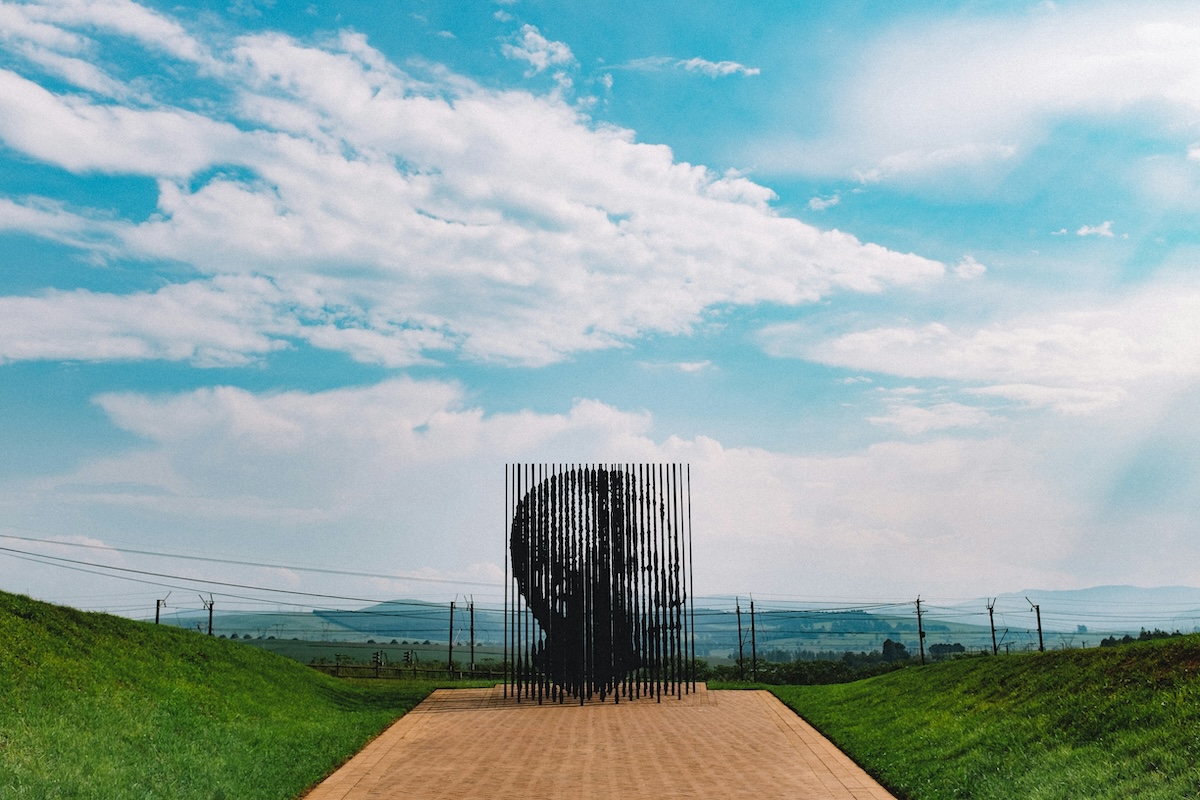
Apartheid is a blight on South Africa’s rich history, but it is an integral part of what South Africa is today.
Apartheid was a system of institutionalised racial segregation and discrimination in which people were separated by colour. The Population Registration Act of 1950 classified all South Africans into one of four categories: Bantu (or black), Coloured (mixed race), Asian and White.
Apartheid rules created distinct zones which were organised by race. White people carried a card, which gave them access to most zones, but other racial groups were banned from areas other than their own. The result was that the white class occupied prime land, while Coloureds, Blacks, and Indians were removed to less desirable locations.
Apartheid denied the black-class South African citizenship; this meant that a whole sector of society was discriminated against in all areas of politics, including the right to vote.
In 1990, F.W. de Klerk repealed the Population Registration Act, but racial segregation was so ingrained in South African society that there was little change.
In 1994, an all-race election was held, and the country’s first black president, Nelson Mandela, was voted in. Mandela had been imprisoned for three decades for protesting pass laws. His government and other prominent political figures worked to end apartheid and create a democratic government.
Even though many of the racial issues that plagued South Africa persist today, Nelson Mandela’s legacy and message of peace live on.
Robben Island
Robben Island is located in Table Bay, just off the coast of Cape Town, South Africa. The island was a prison since the 17th Century, but during Apartheid, it became a jail for political prisoners opposing the white regime.
Robben Island is famed as the place where Nelson Mandela and many other anti-apartheid activists were imprisoned, with Mandela spending 18 of his 27 years in prison here.
The island is of huge historical significance to the South African people, being seen as a symbol of liberty and freedom. The island represents Mandela’s and his fellow political prisoners’ human spirit, their fight for equality, and their ability for forgiveness.
In 1999, Robben Island was declared a UNESCO World Heritage Site. Today, it is open to the public. A museum on the island is dedicated to educating visitors about South Africa’s political history and the role of Nelson Mandela.
Visitors can tour the island, including the cell where Mandela spent 18 years and the limestone quarry where he worked daily.
Cradle of Humankind
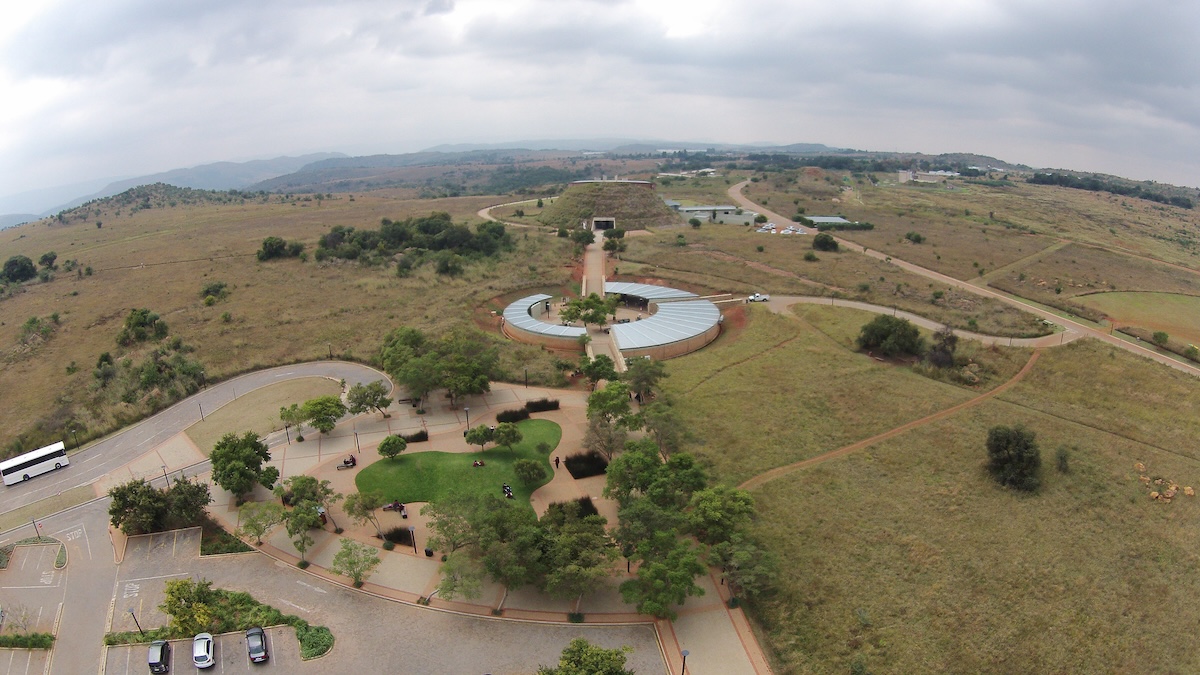
The Cradle of Humankind is a 47,000-hectare site that was designated a UNESCO World Heritage Site in 1999. It is remarkable for its rich fossil records, which have enabled archaeologists to develop a deep understanding of humankind’s origins.
Three significant discoveries have occurred at the Cradle of Humankind, leading scientists to believe that this is where humans originated.
- Australopithecus Africanus—the skull of an Australopithecus africanus child, known as the Taung Child, was found in 1924
- Mrs Ples—the nearly complete skull of an Australopithecus africanus adult, discovered in the Sterkfontein Caves in 1947
- Homo Naledi—fossils of a previously unknown hominin species named Homo naledi were discovered in 2013
The Cradle of Humankind is open to visitors; the site consists of three main attractions:
- The Sterkfontein Caves—Mrs Ples was discovered in these fossil-rich caves
- Swartkrans—a fossil-rich cave where Paranthropus robustus fossils were discovered, and there is evidence of some of the earliest use of controlled fire by hominins.
- Rising Star Cave—the cave in which Homo naledi was discovered
The only site currently accessible to visitors is the Sterkfontein Caves, but the Maropeng Visitor Centre has exhibits and displays that walk visitors through the discoveries and our human history.
Heritage Sites
South Africa is home to ten UNESCO World Heritage Sites, with two more being considered. UNESCO, which stands for United National Educational, Scientific, and Cultural Organization, awards sites UNESCO status for outstanding cultural, historical, or natural significance.
The UNESCO sites in South Africa are:
- Robben Island—the prison where Nelson Mandela was held for 18 years.
- iSimangaliso Wetland Park—This park in KwaZulu-Natal is important for its biodiversity. It is home to many endemic, rare and endangered species of flora and fauna. The site comprises coral reefs, lakes, swamps, and coastal dunes.
- Cradle of Humankind—A site of immeasurable significance in understanding human history and evolution. Three sites, Sterkfontein, Swartkrans, and the Rising Star Cave, have revealed the fossilised remains of early humankind.
- uKhahlamba / Drakensberg Park—The Drakensberg mountain range is rich in biodiversity, but its estimated 35,000 San rock art paintings have played an important role in helping us understand where we came from.
- Mapungubwe Cultural Landscape—Mapungubwe is home to a complex of burial grounds and palace ruins that were left over from an ancient African settlement. Their discovery aids our understanding of early South Africa.
- Cape Floral Region Protected Areas—The fynbos-rich area in the Western Cape is one of the world’s biodiversity hotspots, hosting endemic species found nowhere else on Earth.
- Richtersveld Cultural and Botanical Landscape—In the Northern Cape, the Richterseld is primarily given over to mountainous deserts still inhabited by the nomadic Nama tribe. The cultural practices of the Nama tribe endure today. The nomadic Nama reside in portable rush-mat houses and migrate with cattle to seasonal grazing grounds. The Nama are of interest for their ancient knowledge of the land and its medicinal plants.
- Vredefort Dome—The Vredefort Dome in Freestate is the site of the largest impact crater on Earth. The meteor is estimated to have crashed two billion years ago.
- Khomani Cultural Landscape—The Khomani Cultural Landscape is located in the Kalahari Gemsbok National Park. The desert area contains evidence of human occupation by the ǂKhomani San people dating back to the Stone Age.
- Barberton Makhonjwa Mountains—In the Barberton Makhonjwa Mountains, you will find some of the oldest exposed rocks on Earth. This site dates back 3.6 to 3.25 billion years and has helped geologists and historians understand the planet’s formation.
Major Cities and Landmarks
Cape Town
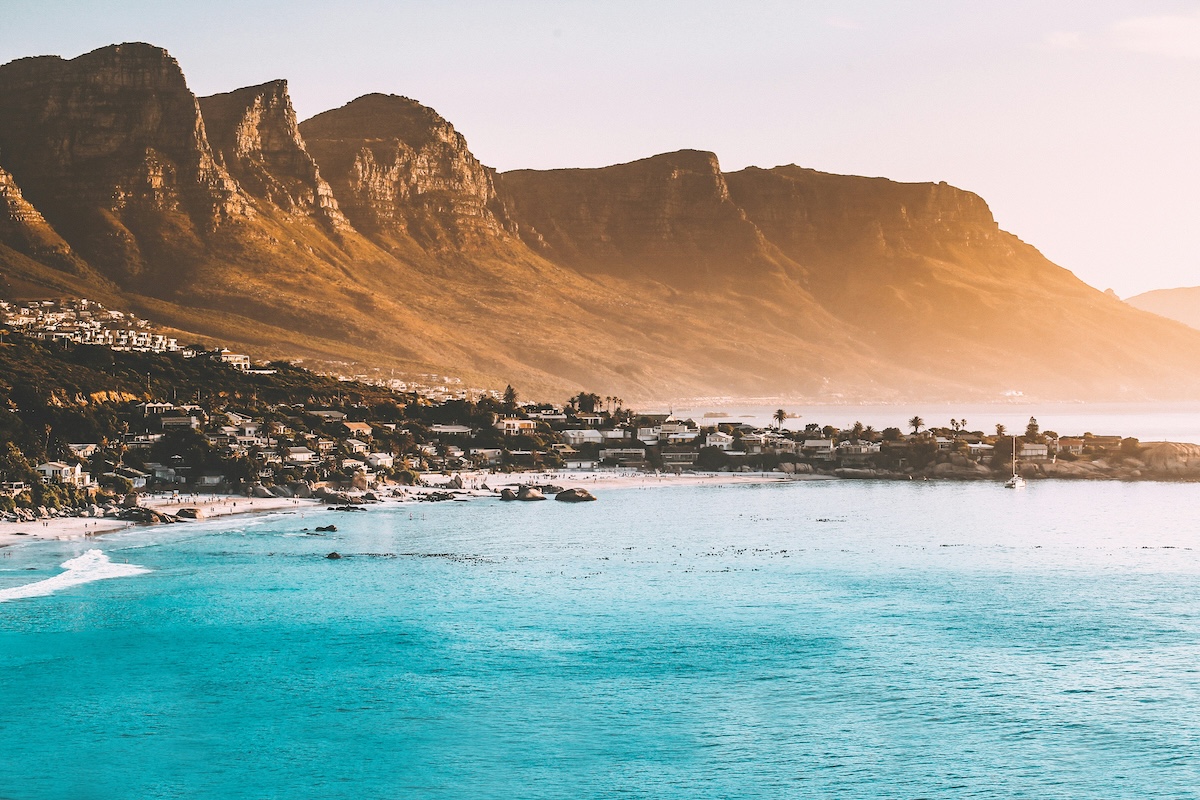
Cape Town has been described as the most beautiful city in South Africa and ranked 7th most beautiful city in the world. South Africa’s second city sits at the southern tip of the country and is known for its stunning natural landscapes, rich history, and vibrant culture.
Some of the best things to do in Cape Town are:
- Table Mountain—Table Mountain is visible everywhere in South Africa’s Mother City. Lauded as one of the 7 Natural Wonders of the World. No visit to Cape Town is complete without a trip to the top of Table Mountain. The scenic cable car runs daily, or you can hike one of the many routes to the top. The views from the top over all of Cape Town and Table Bay are unparalleled.
- V&A Waterfront—Shopping in Cape Town is fabulous. The city has designer outlets, local craft stalls, and an incredible food scene, but the top spot for shopping in Cape Town has to be the V&A Waterfront. This enormous shopping complex sits in an idyllic location on the harbour. The V&A has top brands, small boutiques, and a selection of delectable cafes and restaurants. The Victoria & Alfred Waterfront is the site of the Two Oceans Aquarium, museums, boat trips and a huge hotel.
- Bo-Kaap—An Instagrammers hotspot, the Bo-Kaap area is situated in one of the most elevated parts of the city. A historic area known for its colourful houses and rich Cape Malay culture, Bo-Kaap has one of Cape Town’s oldest mosques and a museum detailing the area’s past.
- Beaches—Think Cape Town, think beach. Cape Town has some of the most stunning beaches in the world. The popular beaches of Clifton and Camps Bay are framed by Table Mountain and lined with celebrity-filled bars and restaurants. Slightly further out, Muizenberg is popular for its world-class surfing.
- Robben Island—Spend a day on the UNESCO World Heritage Site of Robben Island and immerse yourself in South Africa’s recent history.
- Kirstenbosch National Botanical Garden—On the lesser-visited northern side of Table Mountain lies one of the world’s most renowned botanical gardens. Kirstenbosch National Botanical Gardens sits at the foot of Table Mountain. Its extensive gardens are a homage to South Africa’s unique floral kingdom, including the endemic fynbos species. There are glorious walking trails and some divine on-site restaurants.
- Wine Tours—You don’t have to visit nearby Stellenbosch and Franschhoek to indulge in Cape Town’s famed wine-tasting experience. Some of the oldest and most established vineyards in South Africa are nestled on the slopes of Table Mountain. Check out the Constantia Wine Route, which tours all 8 of Constantia’s historic vineyards. Groot Constantia is South Africa’s oldest-producing wine farm.
Johannesburg
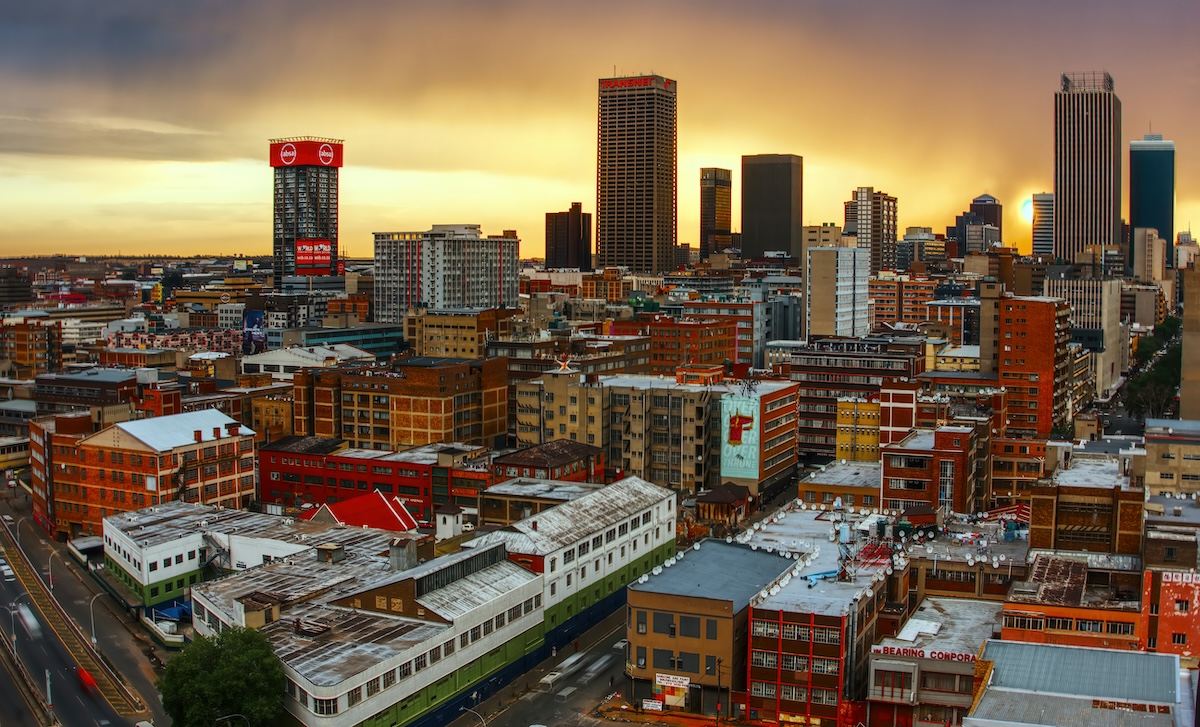
Johannesburg is the largest city in South Africa and a central economic hub. It is often mistaken for South Africa’s capital city, but that honour belongs to quieter and more sedate Pretoria. South Africans affectionately title the city Joburg. Johannesburg is a vibrant, exciting place with plenty to see and do.
The best things to do in Johannesburg are:
- Soweto—Soweto, an acronym short for South Western Township, is famously where Nelson Mandela and Desmond Tutu once lived. Today, it is a cultural melting pot, buzzing with music, theatre and art. Indisputably an impoverished part of the city, Soweto is best visited as part of a group tour.
- Apartheid Museum—Acknowledged as the pre-eminent museum in the world, the Apartheid Museum focuses on 20th-century South Africa. A visit gives visitors an in-depth look at the history of apartheid in South Africa.
- Maboneng Precinct—Visit Maboneng Precinct, this buzzing urban neighbourhood packed with restaurants, art galleries, boutiques, and weekly markets. This is where the cool kids hang out, and the tourists come to shop.
- Sandton City—If you like shopping, head to Sandton City, one of the largest shopping centres in Africa. The gigantic mall has shops from all over the world and all the restaurants you could ever wish for
- Johannesburg Zoo—It may seem counterintuitive to visit a zoo when you have a safari nearby, but if time is short or you want to guarantee animals, then Johannesburg Zoo is the place to be. Johannesburg Lion and Safari Park makes that elusive lion sighting a sure thing.
- Gold Reef City—Gold Reef City is part theme park, part casino and part hotel. The entertainment centre is based on the gold rush era and offers 34 rides, a Jump City Trampoline Park, an underground mine and many restaurants, shops and entertainment areas.
Durban
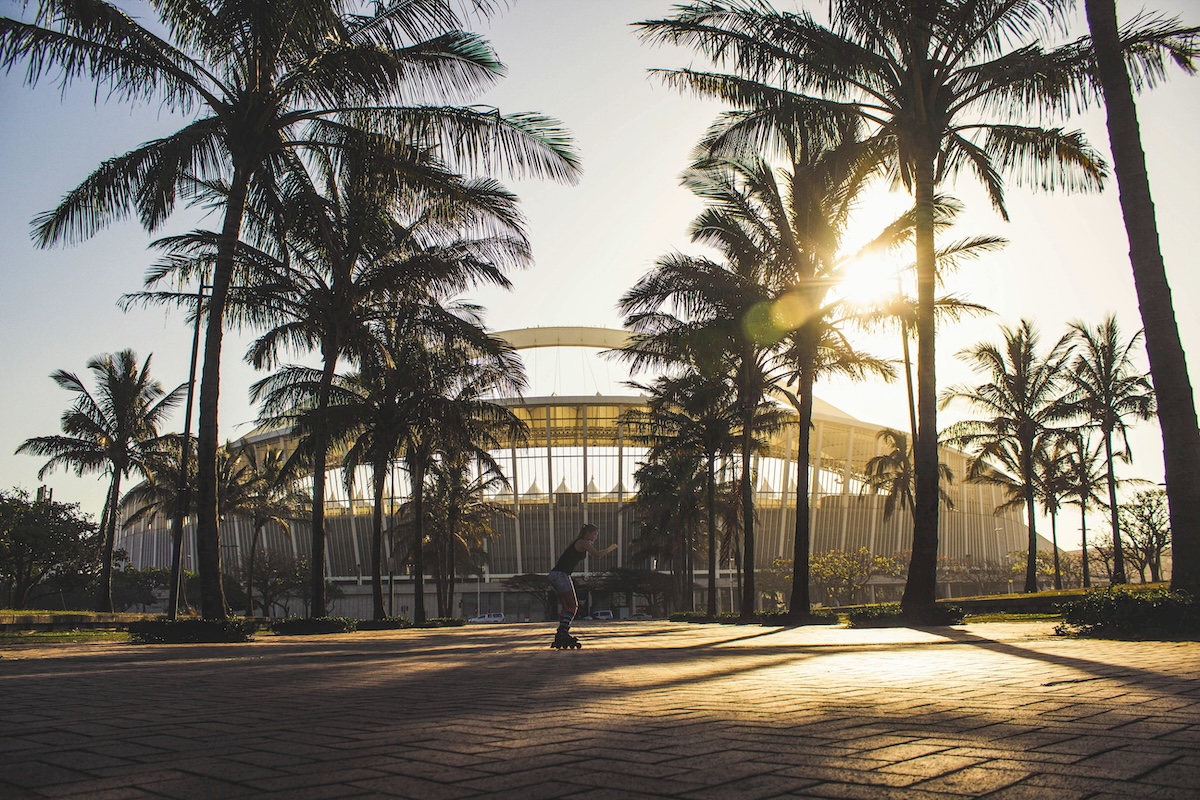
The coastal city of Durban is blessed with a subtropical climate, incredible beaches, and a thriving Indian community. Indian people have lived in Durban since the 1800s, and the city is home to many Indian temples, statues, and architecture. Spiced Indian food has become a staple of the Durban Community.
The best things to do in Durban include:
- Hit the Beach—Durban’s famous Golden Mile, a series of joined-up beaches fronted by a promenade and a lively arrangement of hotels, restaurants, and entertainment venues. Each beach offers something different. South Beach is the best place to learn to surf, North Beach is suitable for swimming and surfing, Addington Beach is suited to children with paddling, swimming, and surfing opportunities, and the Bay of Plenty is a favourite for fishing.
- uShaka Marine World—uShaka Marine World is located on the Golden Mile. It is a water-based theme park centred around its aquarium, water slides, and marine animal shows. It’s one of Durban’s best-loved attractions.
- Umhlanga Rocks—Umhlanga Rocks is a firm favourite for its beautiful beaches, vibrant nightlife, and the iconic Umhlanga Lighthouse. Its vast array of tropical fish and pelagics makes it a top destination for scuba diving in South Africa.
- Victoria Street Market—The Victoria Street Market is Durban’s oldest market. Built on the site of a former Indian market, ‘The Vic’ has more than 200 stalls selling a heady mixture of Indian and African goods. Here, you can pick up spices, clothing, Zulu beadwork, Indian carvings, and fresh produce.
- Durban’s Indian Cuisine—Don’t leave Durban without trying some famous Indian foods. The bunny chow, a hollowed-out loaf of bread filled with curry, is a national institution. There are hundreds of excellent restaurants where you can taste the best of India and Africa combined.
Blue Flag Beaches
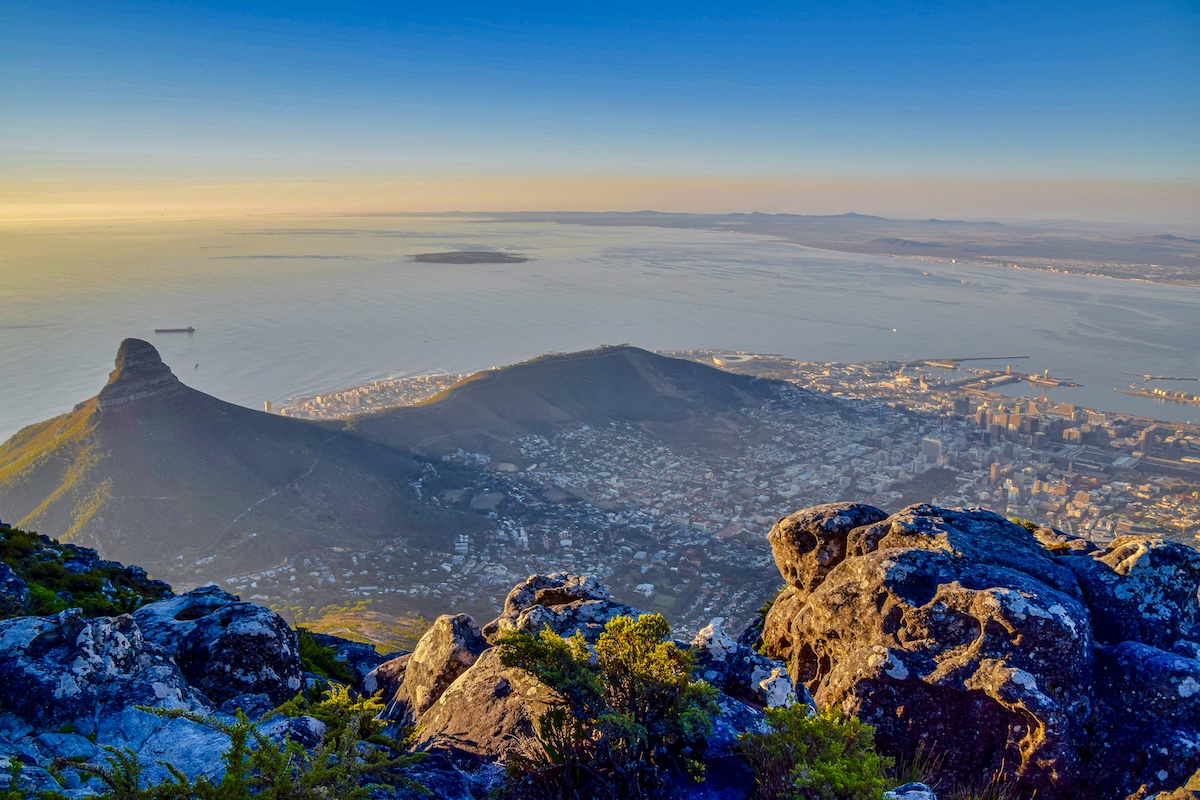
Blue Flag beaches are globally recognised for their high environmental, educational, safety, and accessibility standards. A Blue Flag beach in South Africa should offer excellent facilities and high safety standards. In addition, they should work to educate visitors about the natural environment.
South Africa has many Blue Flag beaches all along its coastline.
- Western Cape—In Cape Town, visit Clifton 4th Beach, Camps Bay Beach, Muizenberg Beach and Llandudno Beach. Slightly further along the coast is Bikini Beach in Gordon’s Bay.
- Eastern Cape—Dolphin Beach in Jeffreys Bay, Humewood Beach at Port Elizabeth and the pristine Kariega Main Beach at Kenton-on-Sea.
- KwaZulu-Natal—Umhlanga Rocks Main Beach, Margate Beach, Marina Beach in Southbroom and Umdoni Park Beach in Pennington.
- Garden Route—Buffalo Bay, Brenton-on-Sea in Knysna, and Robberg 5 Beach in Plettenberg Bay.
- Northern Cape—McDougall’s Bay in Port Nolloth.
Sports and Recreation
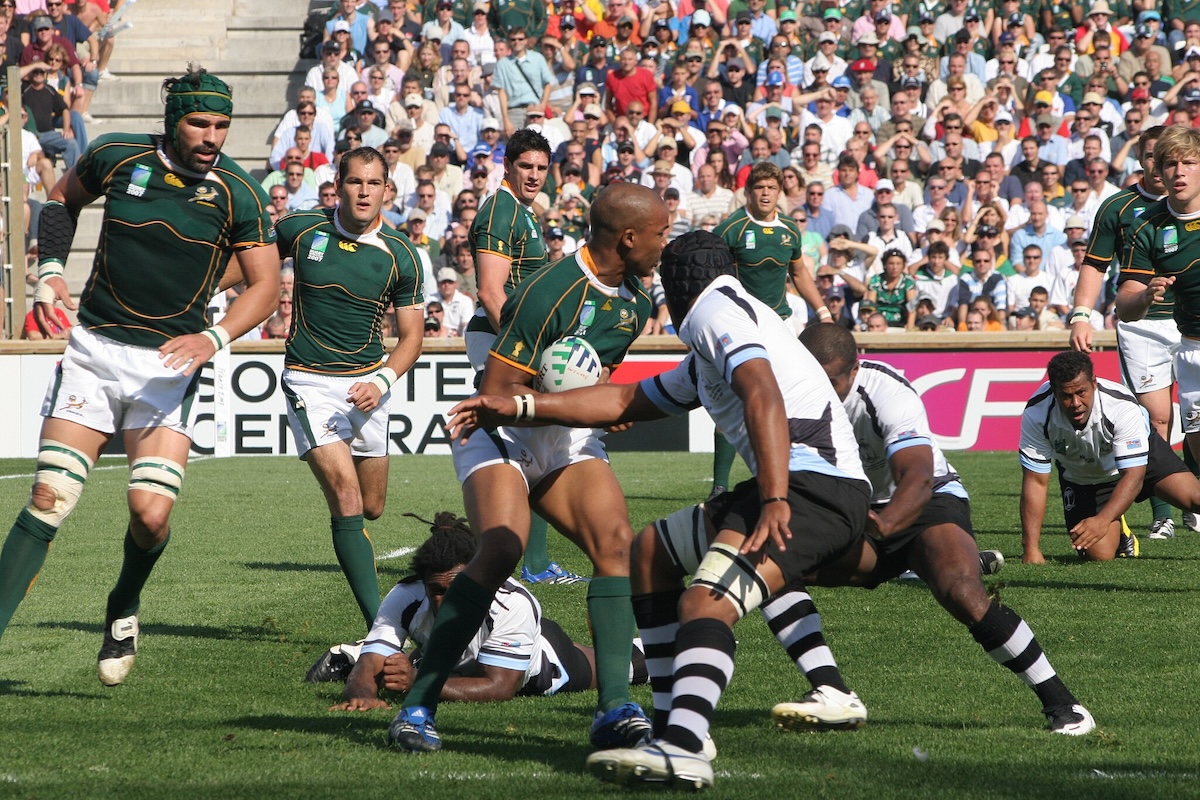
Sports and South Africa are synonymous. You won’t meet a single South African who isn’t a fanatic football fan or a mad Springboks supporter. Sport is the great unifier, and nowhere has it become more important than in post-apartheid South Africa.
Soccer
South Africa’s national soccer team, nicknamed Bafana Bafana ‘The Boys’, became glorious during the 1996 African Cup of Nations. Perceived as underdogs, the team went on to win the tournament, and the country broke out in celebration. Soccer has been a massively important part of South African sporting culture ever since.
In 2010, South Africa hosted the FIFA World Cup. The event was hugely important to the country, allowing South Africa to showcase its raw beauty and culture and its ability to host major international tournaments. The 2010 World Cup generated huge infrastructure development, boosted the economy and raised the profile of soccer in the country.
Soccer is deeply ingrained in South Africa’s fabric. The most popular teams are the Kaizer Chiefs, nicknamed “The Amakhozi,” the Orlando Pirates, and the Mamelodi Sundowns.
Rugby
The South African National Rugby team, the Springboks, is the top-ranked rugby team in the world and the reigning World Champions. The Boks have won the World Cup a record four times: 1995, 2007, 2019, and 2023.
The Springboks entered international Rugby in 1995 when apartheid laws were abolished. Their victory over New Zealand’s All Blacks in the 1995 tournament is one of the greatest moments in South Africa’s sporting history. Perhaps more importantly, the joining of different races in a united team demonstrated a pivotal moment in post-apartheid South Africa.
The Springboks have remained consistently superior ever since. Sixteen Springboks have been inducted into the World Rugby Hall of Fame, and the Boks are the only team with a 50% win rate in the Rugby World Cup series.
National Rugby is a source of pride, and nothing fires a South African’s blood like the green and gold of their Bokke team.
World-class surfing
Given the country’s extensive coastline, surfing is not surprising as one of the most popular sports in South Africa. The country has a 3,000 km wave-swept shoreline that is battered by two major ocean currents: the warm, south-flowing Mozambique-Agulha current and the cold Benguela. The result is lots of perfect swells and ideal surfing conditions.
The top spots for surfing in South Africa are:
- Jeffreys Bay is the most well-known South African surfing spot. J-Bay hosts international surfing competitions and attracts surfers from around the globe.
- Durban offers several surfing spots for all abilities. North Beach and South Beach are the most popular spots.
- Elands Bay is a little-known surfing gem three hours north of Cape Town. A rocky plateau breaks a left point break with rides of up to 200 metres, but it’s only recommended for experienced surfers.
- Muizenberg in Cape Town is the home of surfing in South Africa. It is a 32 km wide bay known for its gentle waves, ideal for beginners. National Geographic magazine has named Muizenberg one of the top 20 surf spots in the world.
- Dungeons, near Hout Bay, Cape Town, is famous for its big wave surfing. However, it’s a hard-to-reach spot.
Gold and Diamond Mining
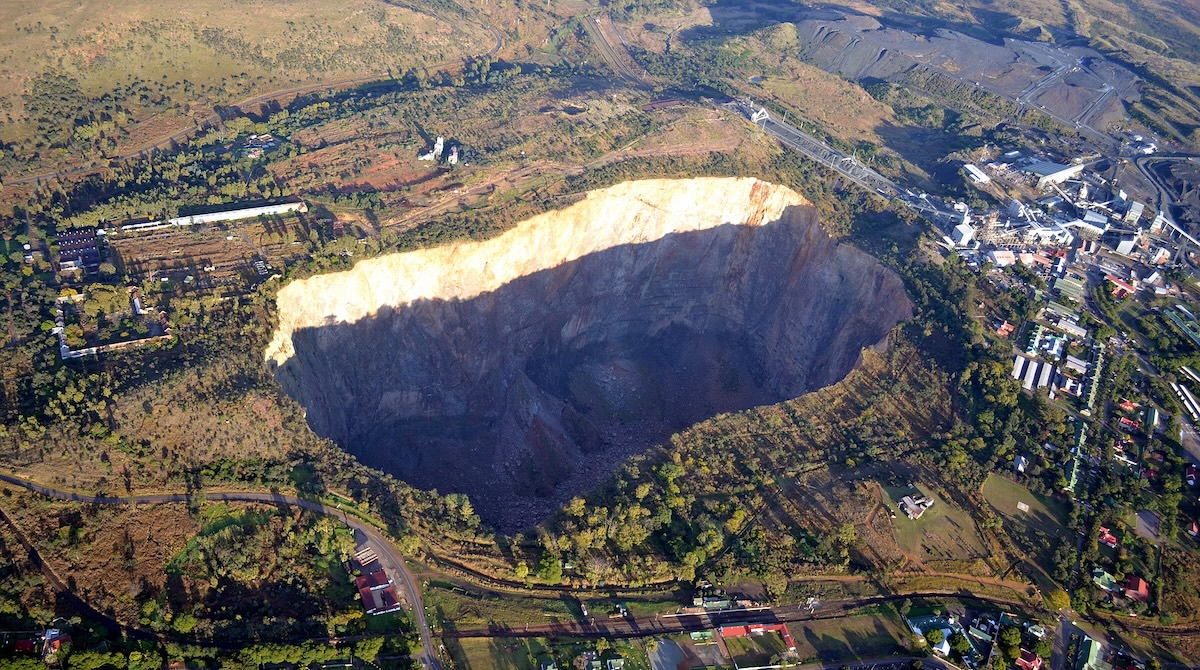
Gold and diamond mining have been integral to the nation’s history and have played an important part in South Africa’s economic development. The discovery of gold and diamonds was beneficial and detrimental to South Africa’s social and economic well-being.
Gold was found near Johannesburg in 1886. The discovery triggered a gold rush, and as a result, South Africa became one of the largest gold producers in the world.
Gold mining had a substantial economic impact, transforming South Africa from an agricultural backwater to a major economy. Gold mining provided South Africa with huge financial benefits, boosted employment, and contributed to the country’s infrastructure development. However, labour exploitation and environmental degradation were evident throughout all mining operations. As a result, mining in South Africa is heavily regulated, and legislation is in place to lessen the impact on the environment and improve labour conditions.
At the end of the 19th century, when gold was discovered in South Africa, diamonds were also found.
The first diamonds in South Africa were found along rivers in the northern provinces. Diamonds were dug by hand and inspired a rush similar to the gold rush. By 1889, 50,000 diamond hunters had moved to an area that was subsequently named Kimberley. In 1880, Cecil Rhodes formed the De Beers Diamond Company and took ownership of the Kimberley Diamond Mine and the surrounding area by buying claims from small landowners. For many years, the Kimberley Diamond Mine was the richest diamond-producing mine in the world, and the De Beers company controlled most of the world’s diamond production.
Like Gold, diamond mining played an important part in South Africa’s economy, creating employment and increasing funds. However, mining companies were guilty of using forced labour and child labour and contributing to innumerable deaths and injuries.
Diamond mining hurts the environment, contaminating soils over a large area, affecting farming and rendering land useless to those who live there. Legislation is in place to control labour laws and the environmental impact of diamond mining in South Africa.
Mining in South Africa has declined by nearly 15% since the 1980s. This is largely due to operational costs, fluctuating commodity prices, and socioeconomic issues.
Robust Economy
The South African economy is the largest on the continent, with Nigeria closely behind. According to the IMF, in 2023, South Africa had a GDP of $373bn.
South Africa is an emerging market with an upper middle-income economy, one of only eight African countries. Its economy is the most industrialised and technologically advanced in Africa and is, as such, highly attractive to investors from outside the continent.
Natural resources are South Africa’s largest export. Today, the country is the world’s biggest producer of platinum, vanadium, chromium, and manganese. Natural resources contribute USD 13.5 billion to the GDP.
Other notable exports from South Africa:
- Gems and precious metals – 17.7%
- Ores, slag, ash – 14.7%
- Vehicles – 11.5%
- Mineral fuels, including oil – 10.8%
- Iron, steel – 5.9
- Machinery, including computers – 5.7%
- Fruits, nuts – 3.9%
Tourism is a significant economic factor; in 2021, travel and tourism contributed nearly 3.2 per cent to South Africa’s GDP.
Famous South Africans
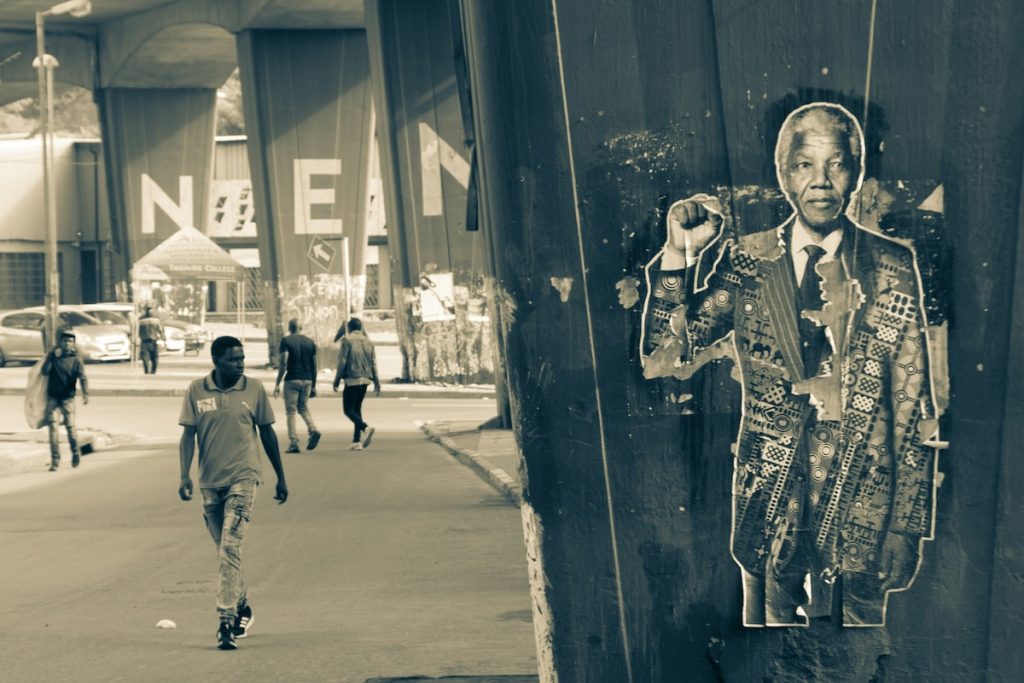
South Africa has a salubrious list of well-known people from all areas of society.
- Nelson Mandela—South Africa’s first President and Nobel Peace Prize laureate
- Desmond Tutu—Archbishop, Nobel Peace Prize laureate, and anti-apartheid campaigner
- Trevor Noah—comedian, writer, and host of The Daily Show in the United States.
- Elon Musk—businessman and owner/investor in SpaceX, Tesla, Inc. O X Corp (formerly Twitter)
- Charlize Theron—Academy Award-winning actress
- J.R.R. Tolkien—the author of The Hobbit and The Lord of the Rings
- Mahatma Gandhi—political activist
- Jacobus Hendrik (Henk) Pierneef—South African ‘Old Master’ artist
- Caster Semenya—Olympic gold medalist and middle-distance runner
- Miriam Makeba—Mama Africa is an internationally known singer and civil rights activist
- Neill Blomkamp—Director of District 9
- AKA (Kiernan Forbes—rapper/musician
- Candice Swanepoel—Victoria’s Secret model
- Jomo Sono—South African footballer and coach
- Zakes Mda—a prominent South African novelist and playwright
South Africa is famous for its natural beauty, diversity of people, and blending of cultures. A sporting nation, a booming industry, a wine lovers’ haven, and a foodie’s delight, South Africa is one of the best places to visit in Africa, an accolade which is well deserved.

